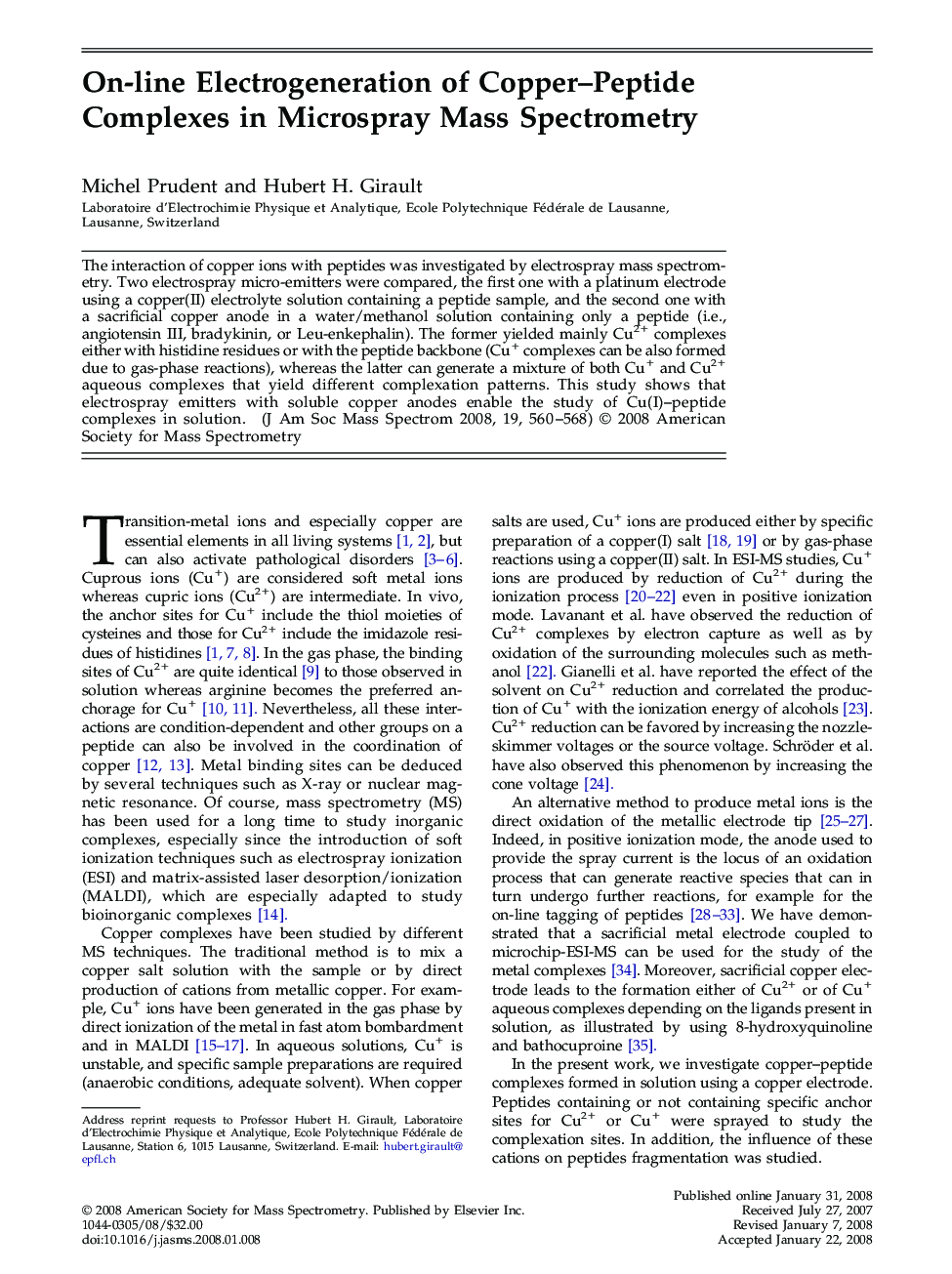| کد مقاله | کد نشریه | سال انتشار | مقاله انگلیسی | نسخه تمام متن |
|---|---|---|---|---|
| 1195471 | 964372 | 2008 | 9 صفحه PDF | دانلود رایگان |

The interaction of copper ions with peptides was investigated by electrospray mass spectrometry. Two electrospray micro-emitters were compared, the first one with a platinum electrode using a copper(II) electrolyte solution containing a peptide sample, and the second one with a sacrificial copper anode in a water/methanol solution containing only a peptide (i.e., angiotensin III, bradykinin, or Leu-enkephalin). The former yielded mainly Cu2+ complexes either with histidine residues or with the peptide backbone (Cu+ complexes can be also formed due to gas-phase reactions), whereas the latter can generate a mixture of both Cu+ and Cu2+ aqueous complexes that yield different complexation patterns. This study shows that electrospray emitters with soluble copper anodes enable the study of Cu(I)–peptide complexes in solution.
Journal: Journal of the American Society for Mass Spectrometry - Volume 19, Issue 4, April 2008, Pages 560–568